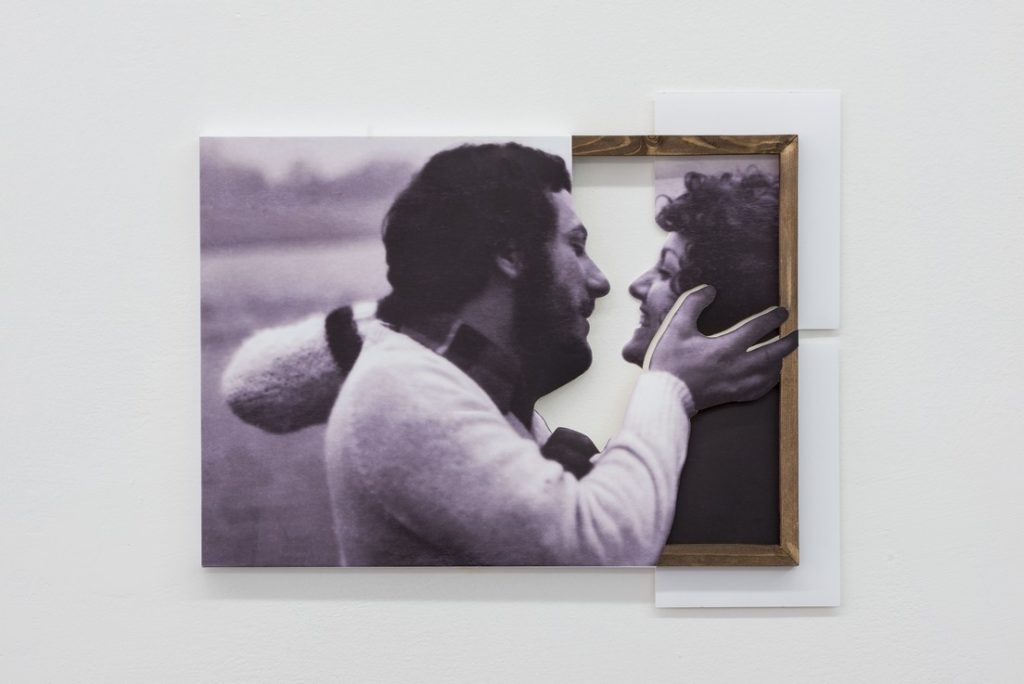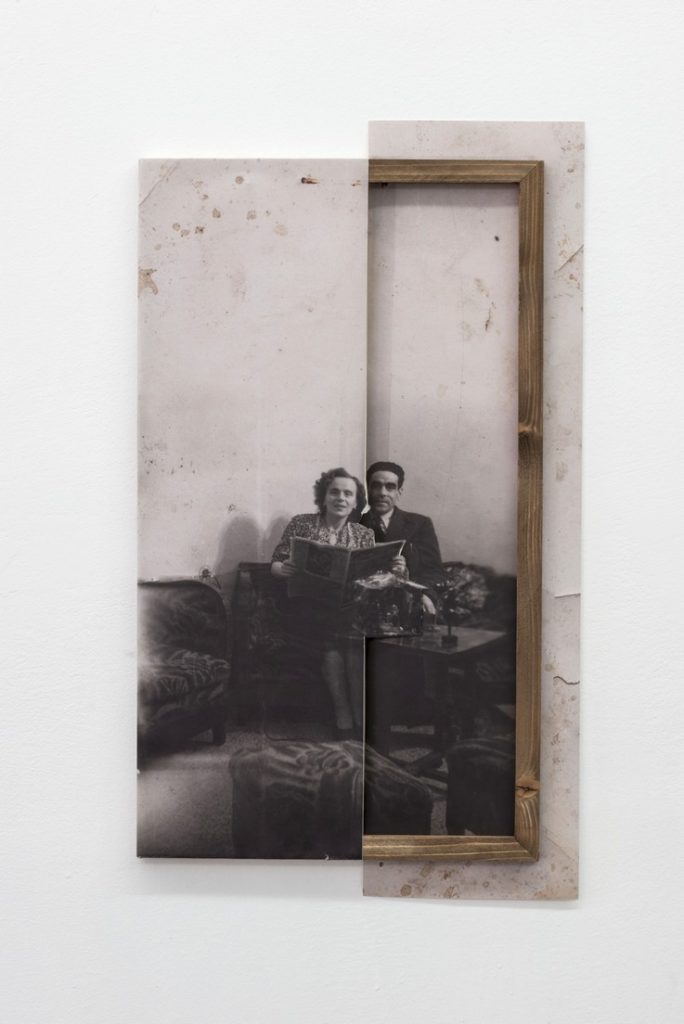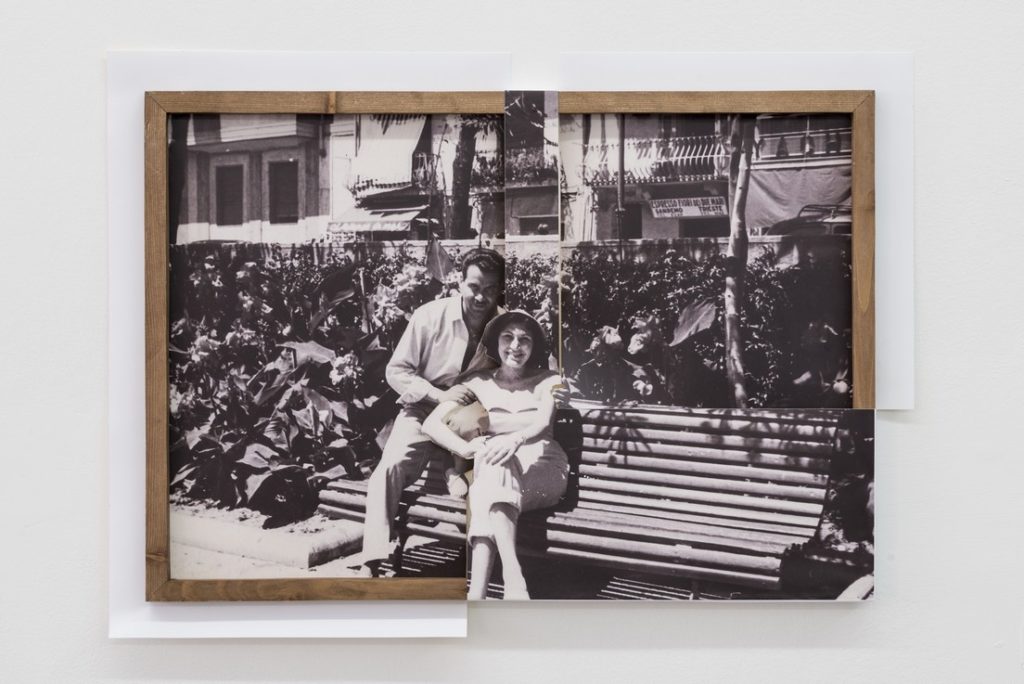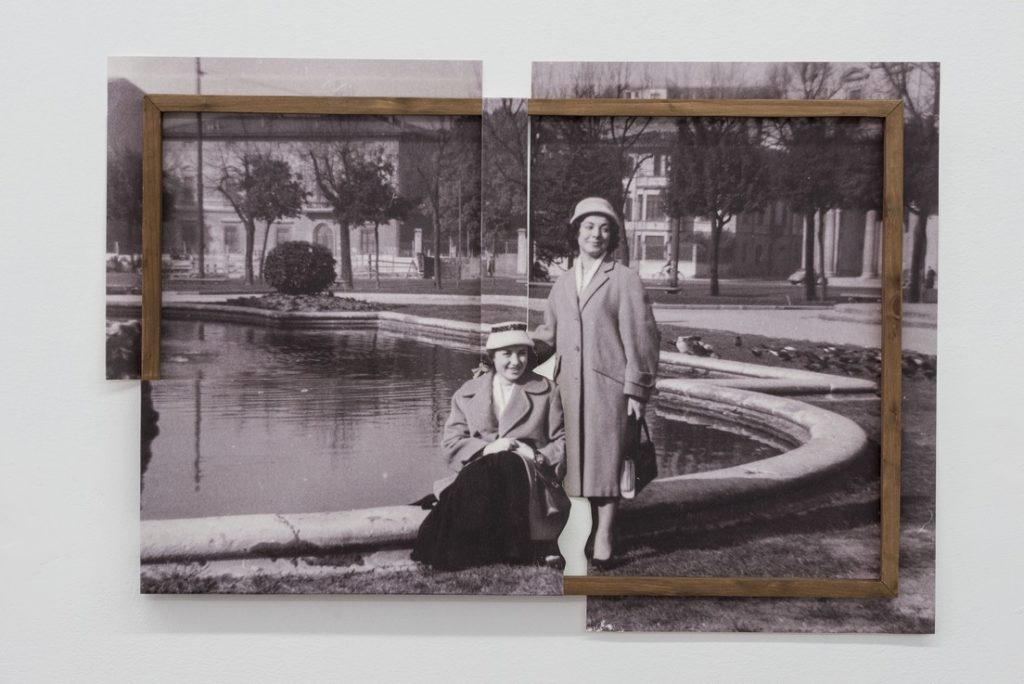Mariana Ferratto
Italian Latin American Institute
06.10.2016 – 11.11.2016
Works

Tu ed io #1, 2016, foto trovata stampata su carta fotografica e cornice di abete, cm 46,2x 35,1x 1,4, courtesy The Gallery Apart, Rome 
Tu ed io #2, 2016, foto trovata stampata su carta fotografica e cornice di abete, cm 35x 43,5x 1,2, courtesy The Gallery Apart, Rome 
Tu ed io #3, 2016, foto trovata stampata su carta fotografica e cornice di abete, cm 46x61x1,7, courtesy The Gallery Apart, Rome 
Tu ed io #4, 2016, foto trovata stampata su carta fotografica e cornice di abete, cm 37,2×53,2×1,5, credits Archivio Torino Principe, courtesy The Gallery Apart, Rome 
Tu ed io #5, 2016, foto trovata stampata su carta fotografica e cornice di abete, cm 457,2×32,2×1,3, courtesy The Gallery Apart, Rome 
Tu ed io #6, 2016, foto trovata stampata su carta fotografica e cornice di abete, cm 52×43,2×1,9, courtesy The Gallery Apart, Rome 
Tu ed io #7, 2016, foto trovata stampata su carta fotografica e cornice di abete, cm54,2×28,6×1,2, courtesy The Gallery Apart, Rome 
Tu ed io #8, 2016, foto trovata stampata su carta fotografica e cornice di abete, cm 38,3×48,8×1,2, courtesy The Gallery Apart, Rome 
Tu ed io #9, 2016, foto trovata stampata su carta fotografica e cornice di abete, cm 53×34,7×1,3, courtesy The Gallery Apart, Rome 
Tu ed io #10, 2016, foto trovata stampata su carta fotografica e cornice di abete, cm 44,5x61x1,5, courtesy The Gallery Apart, Rome 
Tu ed io #11, 2016, foto trovata stampata su carta fotografica e cornice di abete, cm 37,3x53x1,4, courtesy The Gallery Apart, Rome 
Tu ed io #12, 2016, foto trovata stampata su carta fotografica e cornice di abete, cm 43,3x63x1,6, courtesy The Gallery Apart, Rome
The Italian Latin American Institute (IILA) and The Gallery Apart, with the patronage of the Embassy of Argentina in Italy, present “Tu ed io” (You and I), the new project by Mariana Ferratto as part of the “Fuori Quadriennale” collateral events of the 16th Quadriennale d’arte.
Eight years on since the last edition, the Quadriennale d’Arte has run a call for projects to which they invited contemporary art galleries as well as public and private institutions in Rome to promote initiatives aimed at serving as a showcase for the great exhibition held at the Palazzo delle Esposizioni with a series of events related to Italian artists, in line with the commitment of the Quadriennale to promote the prevailing trends in contemporary Italian art around the world.
Mariana Ferratto embodies both the figure of the artist and of the citizen who, while she fully meets the requirement of the Italian citizenship, represents also an example of the contribution that the presence and the activity of second-generation Italians can make to the social and cultural progress of the Country, as they are Italian by birth and education but, at the same time, promoters of a cultural heritage from their homelands. And Ferratto proudly asserts her Argentinean origins, which clearly influence the subjects closest to the artist’s heart as well as her artistic sensitivity. The main topic of Mariana’s work is indeed the relationship between identity and relation, on the assumption that individual identities are the result of that complex game of interactions that regulates our social life: in the artist’s own words, the one (identity) is not possible without the other (relation).
“Tu ed io” (You and I) is the first entirely photographic project by Mariana Ferratto who this time has put away the camera in order to focus on the photographic image explored both as a vector for the representation of the identity and as a material to manipulate searching for a reification, besides the usual two-dimensionality of the support. The artist has brought together a large number of photographs representing couples of people linked by different personal relationships (husband and wife, mother and daughter, two brothers, etc.), and then selected a restricted number of them in order to put together a series consistent with the message, but also to emphasize its plastic structure.
Starting from the photographs she found, Ferratto has then manipulated them through the art of paper cutting, giving life to a new composition of the image. Through the paper cutting technique the artist isolates the single subjects, she separates them from the person standing on her/his side, hence highlighting the individual features deducible from the poses taken, but also from the relation between the protagonists. Under this process of focusing the attention on the single figures, often void spaces emerge, parts of bodies are sharply cut off and such emptiness is frequently replaced by the silhouette of the other figure. The missing parts, the asymmetry of the silhouettes, the voids that stand out against the framing, highlight the interpersonal relationships of the portrayed figures.
Following to this intervention of isolation and separation, the artist intervenes with a subsequent process of reconstruction that takes place by keeping the figures on levels that are physically distant. As the original image becomes once again clearly legible, the game of the staggered levels obtained by manipulating the interlaced photographic paper and the frame confirms the definitive existence of voids and cuts-out to highlight the individuality of the portrayed figures, their range of action within the surrounding space, the role played by each of them in asserting their own identities and in the relationship with the other. Ferratto intervenes in the act of volition underlying every single shot, taking the artistic responsibility of being between the intention of the original photographer and the result of her action. The artist interrupts the synthesis made by the original image, considering it the result of the composition of the single parts and therefore of the sacrifice of the characters’ individuality. The final composition addresses the impossibility of completely melding with the other and the emergence of each individuality, as well as the roles taken in the relation with the other.
share on